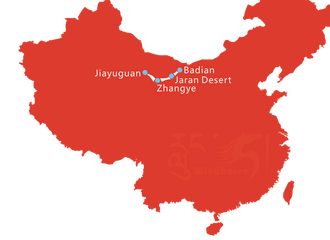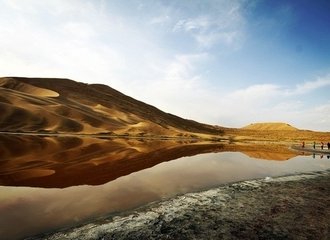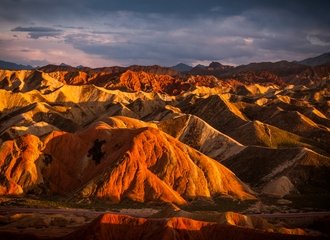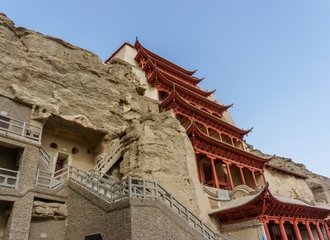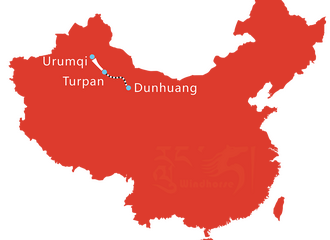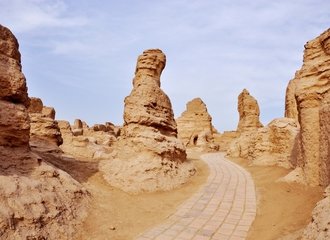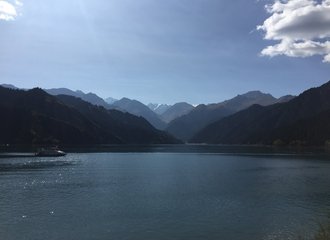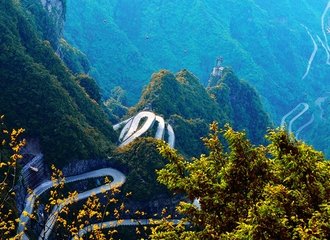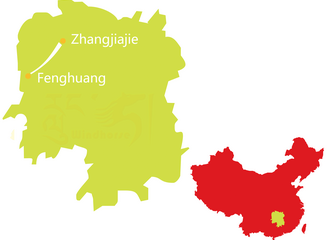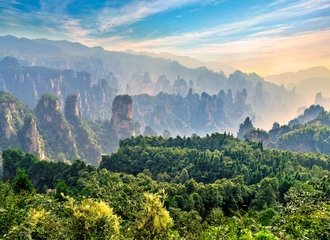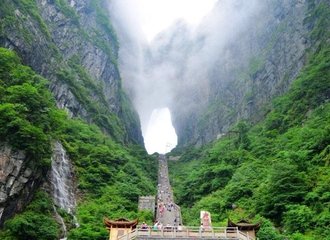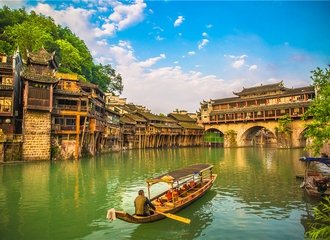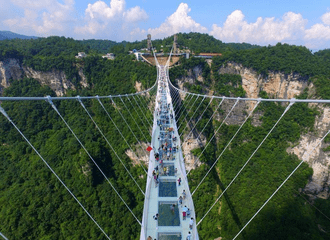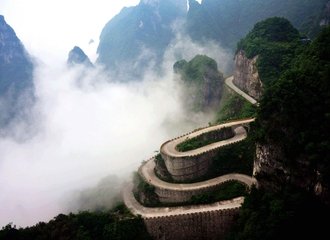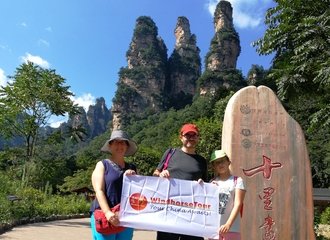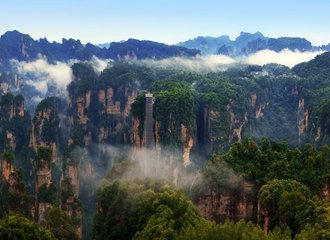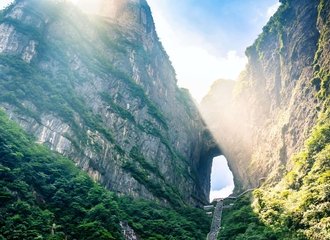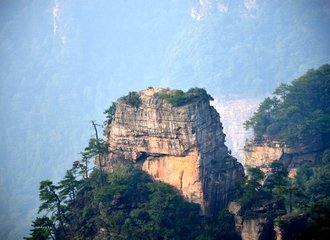China's hidden treasure - magnificent Xinjiang Province


Xinjiang, a vast province in the northwest of China, is a land of extremes and magnificent beauty. Its location is strategically significant, bordered by eight countries including Russia, Mongolia, Kazakhstan, Kyrgyzstan, Tajikistan, Afghanistan, Pakistan, and India, which makes it a cultural melting pot. This region is also known for its varied landscapes, from the stunning Taklamakan Desert, one of the world's largest shifting sand deserts, to the heavenly Tianshan mountain range, a UNESCO World Heritage Site.
Long ago, one of the world's most famous merchants and explorers even took a tour of Xinjiang along the Silk Road! "They say it is the highest place in the world," Marco Polo wrote of climbing the Pamir Mountains from the Afghanistan side. When he emerged from the pass, he found the Uygur homeland and marveled: "From this place, many merchants go forth about the world."
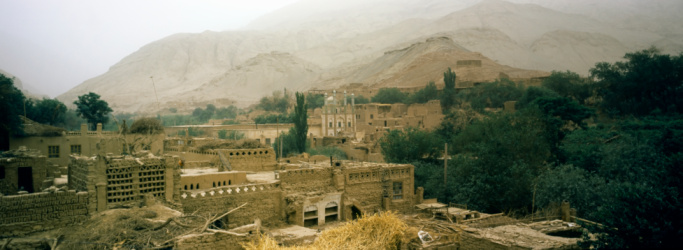
Weather and Climate in Xinjiang Province
The weather here is dry and warm in the south and cold with plenty of rainfall and snow in the north, while sandstorms often blow in across the Taklamakan Desert. Xinjiang has been a trading center since the time of the Silk Road. Today the region is populated mainly by Uygurs, as well as Han Chinese, Kyrgyz, Tajiks, and a variety of other ethnic groups, spread out over an area of more than 1,709,400 square kilometers (660,000 square miles), ranking as the largest region in China.
The weather in Xinjiang is as varied as its geography. The region experiences a continental climate with very cold winters and hot summers, and significant temperature variations between day and night. The best time to visit is typically in the late spring or early fall when the temperature is more moderate and the natural scenery is at its most vibrant.
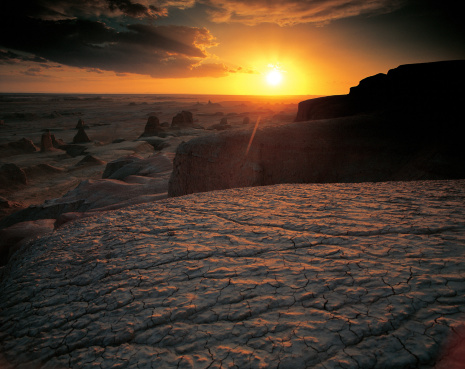
Xinjiang Customs and Culture
Xinjiang's customs and culture are deeply influenced by the Uighur people, a Turkic ethnic group with their unique language, music, dance, and food. The region is renowned for its rich cultural heritage, including the mesmerizing Uighur dance, intricate handicrafts, and delicious cuisine featuring dishes like lamb kebabs and pilaf.
The Uighur people are an ethnic group primarily residing in the Xinjiang Uighur Autonomous Region of China. They are one of the 55 officially recognized ethnic minorities in China and have a population of around 10 million. Uighurs are of Turkic descent and have a culture, language, and history distinct from the Han Chinese majority.
Language and Literature
Uighurs speak the Uighur language, which belongs to the Turkic language family and is written in a modified Arabic script. Their literature is rich and varied, including epic poetry, folk tales, and religious texts. The oral and written traditions often reflect the Islamic influence as well as the nomadic and agricultural lifestyle of the Uighurs.
Religion
The majority of Uighurs practice Islam, and their religious beliefs are a significant part of their cultural identity. Mosques and Islamic schools are common in Uighur communities, and religious festivals like Eid al-Fitr and Eid al-Adha are celebrated with great enthusiasm. The Islamic influence is also evident in Uighur art, music, and architecture.
Culture and Traditions
Uighur culture is a blend of Central Asian, Middle Eastern, and indigenous elements. Traditional Uighur music and dance are particularly notable, featuring instruments like the dutar (a two-stringed lute) and lively dances that are often performed at weddings and festivals. Uighur cuisine is also distinct, with dishes like Laghman (hand-pulled noodles), mutton kebabs, and pilaf being popular.
Crafts and Art
Uighurs are known for their craftsmanship, particularly in areas such as carpet weaving, leatherwork, and jewelry making. Uighur artisans often incorporate geometric and floral designs that reflect their Islamic heritage.
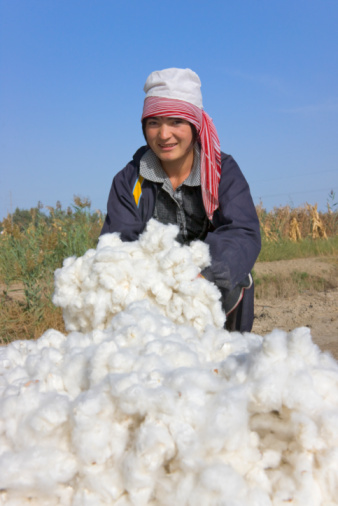
There is a long history of cotton growing in Xinjiang. Uygurs are very adept at growing cotton even in the region's harsh conditions, as such, most people usually wear cotton cloth garments. Men sport a long gown called a qiapan, which opens on the right and has a slanted collar. It is buttonless and is bound by a long square cloth band around the waist.
Women wear broad-sleeved dresses and black waistcoats with buttons sewn on the front, though some now, both men and women, like to wear Western-style suits and skirts. Uygur men, old and young, like to wear a small four-cornered cap embroidered with black, white, or colored silk threads in traditional Uygur designs in adherence to the regulations of their devout Muslim faith. Women adorn themselves with earrings, bracelets, and necklaces - some even paint their eyebrows and fingernails on grand festive occasions.
In addition to growing cotton, wheat, maize, and paddy rice are the Uygurs’ main grain staples. As a result, the Uygur diet is heavy in grains and dairy products - many Xinjiang Uygurs enjoy milk tea with some sort of baked maize or wheat cakes. One of the most recognizable dishes amongst the Xinjiang Uygurs is called pilaf - a fried rice dish cooked with mutton, sheep fat, carrots, raisins, and onions
The Uygurs are excellent dancers. During your Xinjiang tour, you will have a chance to listen to a "local concert" - locals playing Uygurs' special musical instruments. The "12 Mukams" (opera) is an epic comprising more than 340 classic songs and folk dances, and recently this musical treasure, which was on the verge of being lost, has been painstakingly compiled, studied, and recorded to preserve this cultural legacy.
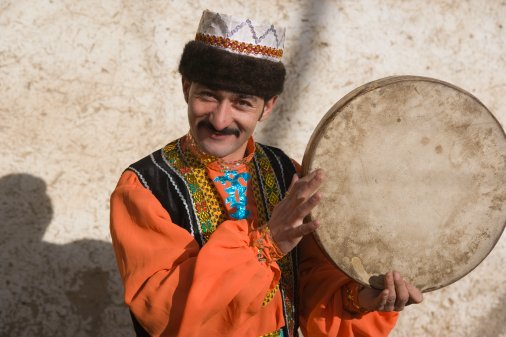
The "Daolang Mukams," popular in Korla, Bachu (Maralwexi), Markit, and Ruoqiang (Qarkilik), is another suite with a distinct Uygur flavor. There is a wide variety of plucked, wind, and percussion Uygur musical instruments, including the dutar, strummed rawap, and dap - is a sheepskin tambourine with many small iron rings attached to the rim used to accompany dancing.
Xinjiang is etched with unique colors, from the camel trains to the fantastic Ghost Town. This rich desert land is sure to amaze you more and more with each step you take through the desert!
What to visit in Xinjiang Province
Visitors are drawn to Xinjiang for its untouched natural beauty and the opportunity to experience a culture that's distinct from the rest of China. The region offers a range of activities from camel treks through the desert to hikes in the lush mountain pastures.
Some of the best places to see in Xinjiang include the ancient city of Kashgar, which offers a glimpse into the region's rich Silk Road history. The Heavenly Lake (Tianchi) is another must-see, nestled high in the Tianshan Mountains, it's a place of surreal beauty. Don't miss the Bezeklik Thousand Buddha Caves, a complex of Buddhist cave grottos dating from the 5th to 14th centuries. For those seeking an adventure, the Kanas Nature Reserve offers stunning natural scenery and diverse wildlife.
Xinjiang province, with its dramatic landscapes and rich cultural heritage, offers a plethora of sites that are a must-visit for any traveler. Here's a detailed look at some of the best places to see in Xinjiang:
Kashgar Old Town
Kashgar is one of Xinjiang's most prominent towns, located in the far west of China, in the southwest of Xinjiang province, at a significant junction of two branches of the ancient Silk Road. In Kashgar City, you can pay a visit to the Mor Buddhist Pagoda, see the town's many bustling bazaars, or catch other sights like Id Kah Mosque and Tomb of Mahmud Kashagari.
Another phenomenal attraction in Xinjiang is the "Ghost Town in the Desert," situated in Wuerhe, about 100 kilometers (62 miles) away from Karamay city. Being one of the few typical wind erosion physiognomies in the world, the Ghost City has become a famous tourist area for its unique landform and howling wind.
This ancient city is a maze of traditional houses and narrow streets. It's home to the Id Kah Mosque, the largest mosque in China, and the bustling Sunday Market, where you can find everything from spices to silk. The old town is a cultural hub that offers a glimpse into Uighur life and traditions.
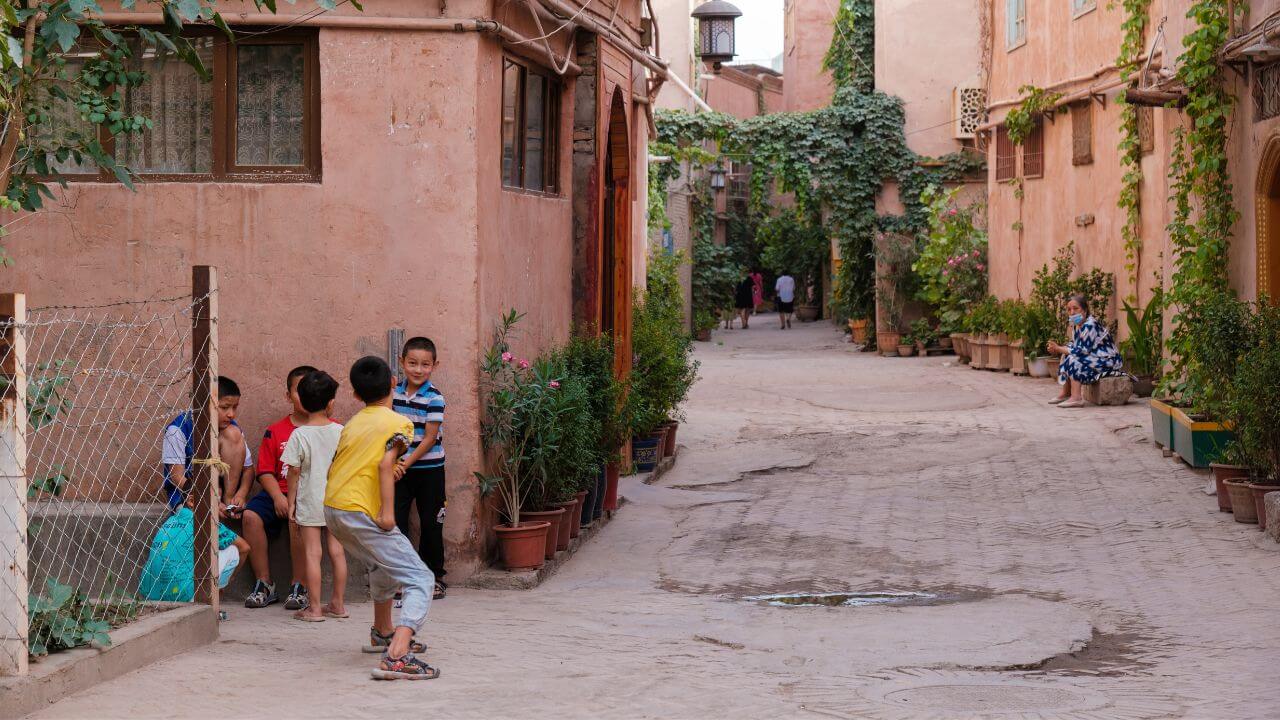
Heavenly Lake (Tianchi)
Nestled in the Tianshan Mountains, this alpine lake is known for its crystal-clear waters and stunning mountain backdrop. It's a great place for hiking, boating, or simply enjoying the serene beauty. The lake is also associated with various legends and is considered sacred by the local people.
Taklamakan Desert
As one of the world's largest sandy deserts, the Taklamakan offers an unforgettable experience. You can take a camel safari to explore the shifting dunes or visit the ancient city of Jiaohe and the Bezeklik Thousand Buddha Caves, which are on the edge of the desert.
Kanas Nature Reserve
This area is known for its diverse wildlife, colorful forests, and the mysterious Kanas Lake, which is said to be home to a lake monster! The reserve is a fantastic place for hiking and photography, especially in autumn when the forest turns into a vibrant array of colors.
The Silk Road Ruins
Xinjiang was a crucial part of the ancient Silk Road. You can visit the ruins of ancient cities like Jiaohe and Gaochang, which flourished as commercial and cultural centers thousands of years ago. These sites give insight into the region's historical significance and the blend of cultures that passed through the Silk Road.
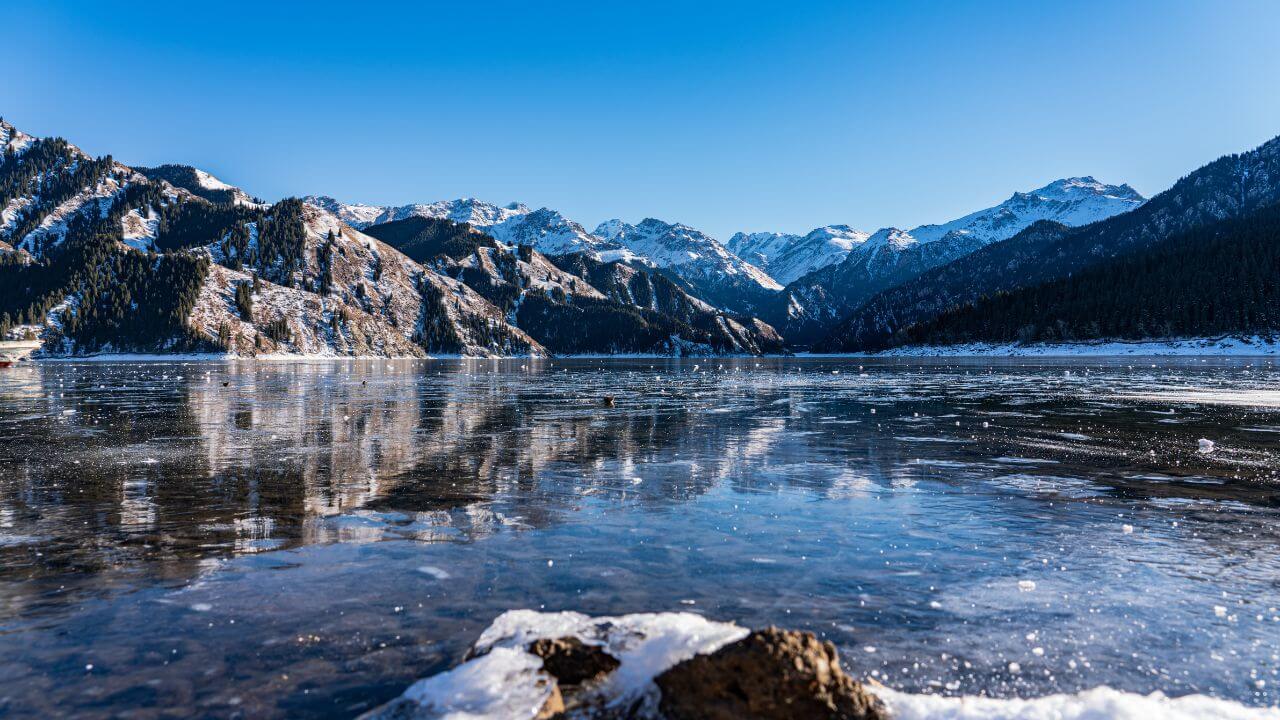
Tianshan Grand Canyon
With its dramatic cliffs and verdant valleys, the Tianshan Grand Canyon offers some of the most spectacular scenery in Xinjiang. It's a great place for hiking and appreciating the natural beauty of the Tianshan Mountains.
The Grape Valley of Turpan
Located in the Turpan Depression, the hottest and lowest point in China, this lush valley is a surprising contrast to its arid surroundings. It's famous for its grape production, and you can visit local vineyards to taste some of the region's delicious dried fruits.
Hotan
Known for its jade and silk, Hotan is a fascinating city with a rich history. You can visit the local markets, where jade traders haggle over precious stones, or learn about the art of silk-making at a local workshop.
Xinjiang's diverse and beautiful landscapes, rich history, and unique cultures make it a fascinating destination. From the bustling bazaars to the tranquil beauty of the natural parks, there's something in Xinjiang for every type of traveler. Whether you're interested in history, and culture, or just looking to explore some of the most stunning and diverse landscapes on the planet, Xinjiang has much to offer.
In summary, Xinjiang is a place of extraordinary natural wonders and a unique cultural tapestry. Its diverse landscape, rich history, and vibrant culture make it a fascinating destination for travelers seeking something out of the ordinary.


